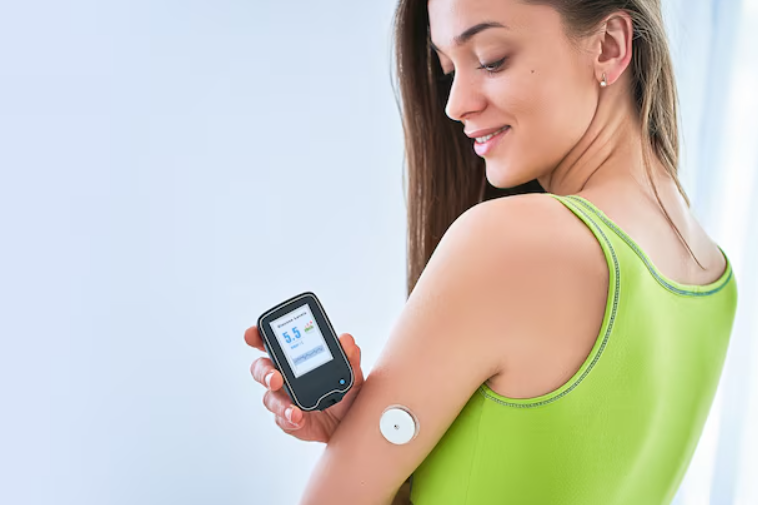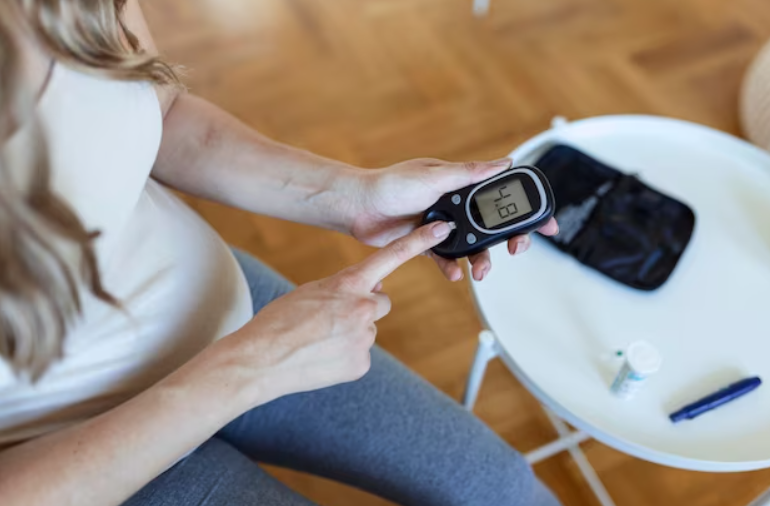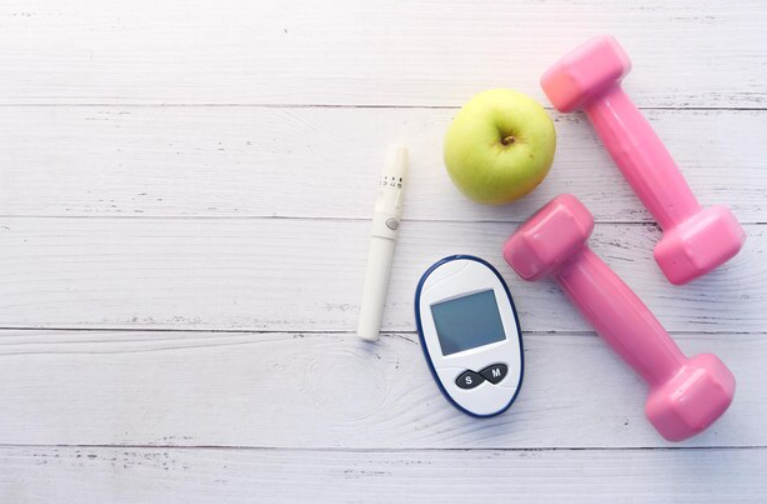Exercise and Its Impact on Blood Sugar Levels
Exercise has been shown to significantly affect blood sugar levels, often resulting in a decrease in blood glucose concentrations. The hormone insulin, which controls blood sugar levels, is more sensitive to the body when one is physically active. The quantity of sugar in the blood is reduced while muscles are working because they use glucose as fuel. This physiological reaction may help keep blood sugar levels more consistent throughout the day, which is especially helpful for those with diabetes and other related diseases.
Blood Sugar Regulation Through Physical Activity
Furthermore, the degree to which blood sugar levels are dropped might vary depending on the kind and intensity of activity. Running, swimming, and cycling are examples of aerobic workouts that are very good at encouraging the muscles to absorb glucose.
Aerobic Exercise and Its Role in Blood Sugar Management
In addition to improving insulin sensitivity, resistance training, which includes bodyweight exercises or weightlifting, can have long-term positive effects on blood sugar regulation.
Balancing Resistance and Aerobic Training for Optimal Health
People must strike a balance in their workout regimens since resistance and aerobic training may both be beneficial for reaching the best possible health results.
Exercise Benefits for People with Type 1 and Type 2 Diabetes
Both people with type 1 and type 2 diabetes may benefit from exercise’s ability to reduce blood sugar levels and enhance insulin sensitivity. You may lower your risk of problems, regulate blood sugar, and enhance your general health by doing strength training, flexibility exercises, and aerobic activity on a regular basis.
Improving Blood Sugar and Overall Health Through Exercise
For safe and efficient blood sugar control, exercise must be combined with healthy eating, hydration, and monitoring.

Essential Lifestyle Factors for Effective Blood Sugar Management
Before beginning a new fitness program, it’s wise to speak with your healthcare physician if you have diabetes or any other medical condition. They can assist in creating a strategy that best suits your
How Regular Physical Activity Improves Metabolic Health
Regular physical activity may promote metabolic health over the long run in addition to its immediate impact on blood sugar levels. Regular exercise may help people maintain a healthy weight, lose body fat, and enhance cardiovascular health—all of which are essential for properly controlling blood sugar levels. As a result, adopting a balanced exercise program into one’s lifestyle is advantageous for both short-term blood sugar regulation and long-term health and well-being promotion.
Does exercise lower blood sugar levels?
Yes, blood sugar levels may be lowered by exercising. Blood sugar management is greatly aided by physical exercise, particularly for people who have type 2 diabetes or are at risk for the disease. Exercise may help reduce blood sugar and increase insulin sensitivity in the following ways:
Higher Sensitivity to Insulin
Muscles use glucose, or sugar, as fuel while you work out. The body gets more adept at utilising insulin to move glucose from the circulation into cells when you engage in regular physical exercise, which raises insulin sensitivity. Your blood sugar levels will thus often be lower after exercise. People with type 2 diabetes who may have insulin resistance, a condition in which the body doesn’t react properly to insulin, will especially benefit from this.
The Role of Glucose in Muscular Energy During Exercise
Your muscles need energy to carry out the job they do during physical exercise, and they acquire this energy from glucose that is stored in the muscles and liver as glycogen. Your body uses up glucose when it burns through these glycogen reserves during physical activity. In the near term, this lowers blood sugar levels.
Aerobic Exercise for Effective Blood Sugar Control
Aerobic exercises like walking, jogging, cycling, and swimming are especially good for decreasing blood sugar because they raise heart rate and burn glucose for energy.
Strength Training and Its Impact on Blood Sugar
Increasing muscle mass with resistance training or weightlifting may also help reduce blood sugar. The body’s capacity to store and utilise glucose is enhanced by increased muscular mass.

Better Blood Flow
Additionally, exercise increases blood flow to tissues and circulation, which facilitates the more effective delivery of insulin and glucose throughout the body. This improved circulation lowers the quantity of sugar in the blood by enabling muscles and organs to utilise glucose more efficiently.
Weight Control and Fat Loss
Exercise aids in maintaining a healthy weight and aids in fat removal. Excess body fat may worsen insulin resistance and make blood sugar control more challenging, especially around the belly. Regular exercise helps you lose body fat, which makes your body more receptive to insulin and improves blood sugar regulation.
Blood Sugar Regulation After Exercise
Beyond the actual activity, exercise may have positive effects on blood sugar levels. Your blood sugar may remain lower than normal for 24 to 48 hours after you stop exercising because your body’s cells remain more receptive to insulin throughout this time. For those who have diabetes, this effect is especially helpful since it keeps blood sugar levels steady throughout the day.
Reduced Stress
Exercise may help reduce the stress hormone cortisol, particularly aerobic and mindfulness exercises like yoga. Reducing stress via regular exercise may indirectly assist in regulating blood sugar levels since high cortisol levels can cause blood sugar levels to rise.
Diabetes Management and Exercise
Exercise is a key component of blood sugar control for those with type 2 diabetes. A balanced diet and regular exercise may help manage the illness better overall and lessen the need for medication. Exercise is beneficial for those with type 1 diabetes as well, but they must carefully monitor their insulin dosages since physical activity might alter insulin requirements.
Exercise Types for Blood Sugar Reduction
Both aerobic and strength-training activities are essential for lowering blood sugar levels. Exercises of the following kinds may aid with blood sugar management:
Aerobic Exercise
Walking, running, swimming, cycling, dancing, and hiking are examples of aerobic exercise. Every week, try to get in at least 150 minutes of moderate-intensity aerobic activity (about 30 minutes five days a week).
Strength Training
Strength training includes bodyweight workouts like push-ups, lunges, and squats, as well as weightlifting and resistance band activities. At least twice a week, try to include strength training activities.
High-Intensity Interval Training (HIIT)
Short bursts of high-intensity activity are interspersed with rest or low-intensity exercise in high-intensity interval training, or HIIT. It has been shown that HIIT is useful for enhancing insulin sensitivity and reducing blood sugar levels.
Flexibility and Balance Exercises
Practices like Pilates or yoga increase flexibility, lower stress levels, and enhance general muscular function, all of which indirectly aid with blood sugar management.
Safety Factors When Exercising
Even though exercising helps reduce blood sugar, there are several crucial safety precautions to take, particularly for diabetics:
Check Blood Sugar Levels
To see how your body reacts to exercise, if you have diabetes, check your blood sugar levels both before and after. You may get hypoglycemia (low blood sugar) if your blood sugar decreases too much as a result of exercise. In the event that your blood sugar levels fall too low during or after exercise, have a supply of fast-acting carbohydrates on hand, such as glucose tablets or juice.
Stay Hydrated
Drink plenty of water since exercise may cause dehydration, which can impact blood sugar levels. To keep hydrated, sip on plenty of water before, during, and after physical activity.
Avoid Overexertion
Start out cautiously and progressively increase the intensity and length of your exercises if you’ve never worked out before or haven’t worked out in a while. Blood sugar levels might vary, and damage may result from overexertion.
Food Balance
Since exercise affects blood sugar levels, it’s critical to balance your training regimen with your meals and snacks. To avoid low blood sugar during or after your workout, you may need to modify your food intake, for instance, if you want to work out after eating.

FAQ: Blood Sugar Management with Exercise
1. In what ways could exercise control blood sugar levels?
Exercise increases insulin sensitivity, so your body uses insulin to control blood sugar more effectively. Physical exercise also leads muscles to consume glucose for energy, which may drop blood sugar levels, particularly after meals.
2. In those with diabetes, does exercise help to lower high blood sugar?
Indeed, consistent exercise increases insulin sensitivity and facilitates glucose absorption by muscles, therefore helping to control blood sugar. Although exercise by alone cannot treat diabetes, it greatly reduces the risk of problems resulting from high blood sugar levels.
3. Which kinds of activity help to reduce blood sugar?
Aerobic workouts like walking, running, cycling, and swimming are wonderful for burning glucose and decreasing blood sugar levels. Strength training or resistance workouts, like weightlifting, can aid by increasing muscle mass, which improves the body’s capacity to store and utilise glucose.
4. How frequently should I exercise to regulate blood sugar effectively?
Aim for at least 150 minutes of moderate-intensity aerobic exercise per week, along with two or more days of strength training. However, talk with your healthcare practitioner to build a specific strategy depending on your health situation.
5. Should I check my blood sugar before and after exercise?
Yes, particularly if you have diabetes. Checking your blood sugar before and after exercise helps you learn how various activities impact your levels. It’s vital to watch for any large reductions in blood sugar, which may lead to hypoglycemia (low blood sugar).
6. Can exercise assist with both type 1 and type 2 diabetes?
Yes, both type 1 and type 2 diabetes may benefit from regular physical exercise. For persons with type 1 diabetes, exercise helps increase insulin sensitivity, while those with type 2 diabetes may have even greater advantages, such as better blood sugar control and weight management.
7. Is it safe to exercise if my blood sugar is too high?
If your blood sugar is really high (above 250 mg/dL), it may not be safe to exercise, since it may raise the risk of problems. It’s essential to monitor your blood sugar levels and talk with your healthcare practitioner for recommendations before participating in physical activity when blood sugar is high.
8. Should I eat before exercising if I have diabetes?
It’s vital to feed your body adequately before exercise, particularly if your blood sugar is low or if you’re expecting a lengthy or strenuous workout. Small snacks with carbs and protein may assist sustain blood sugar levels during physical exercise.
9. How long should I wait after eating before exercising?
It’s typically suggested to wait around 1-2 hours after eating before participating in strenuous physical activity to prevent the danger of post-meal blood sugar rises. However, lighter workouts like walking may be done quickly after eating.
10. Can resistance exercise assist with blood sugar management?
Yes, resistance training, such as weightlifting or bodyweight exercises, may build muscle growth and promote glucose absorption by the muscles. This not only helps lower blood sugar levels but also boosts general metabolic activity and insulin sensitivity.
